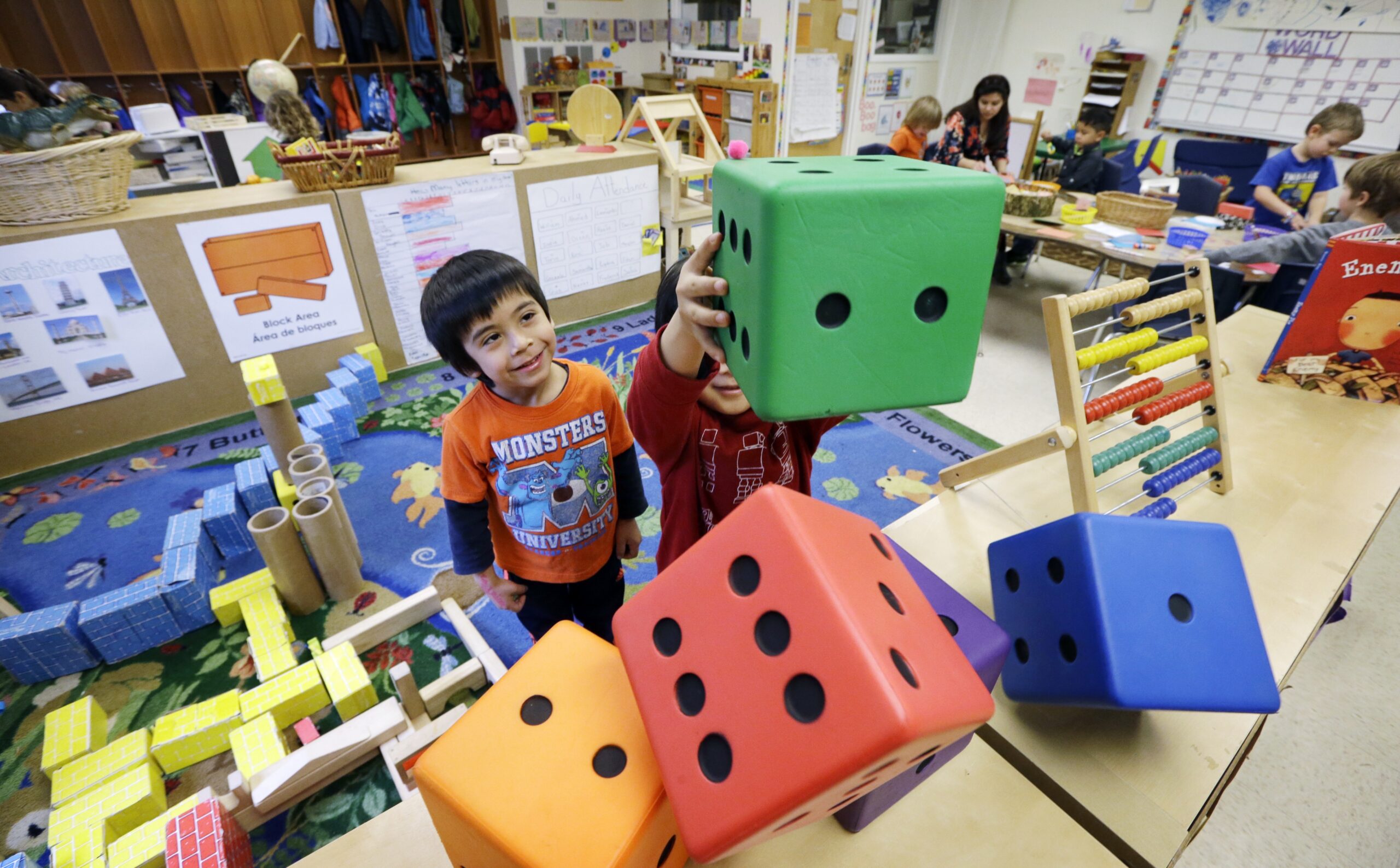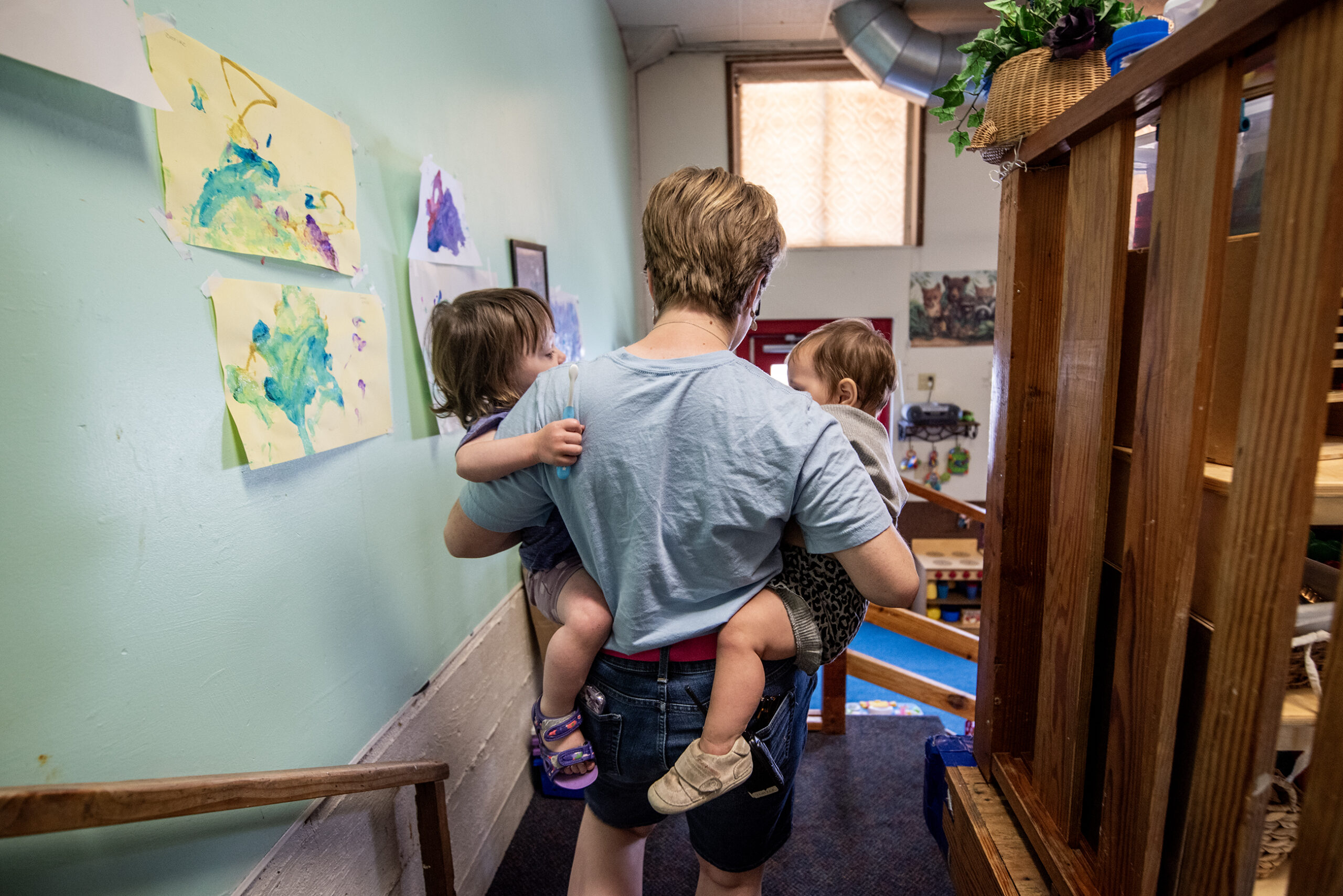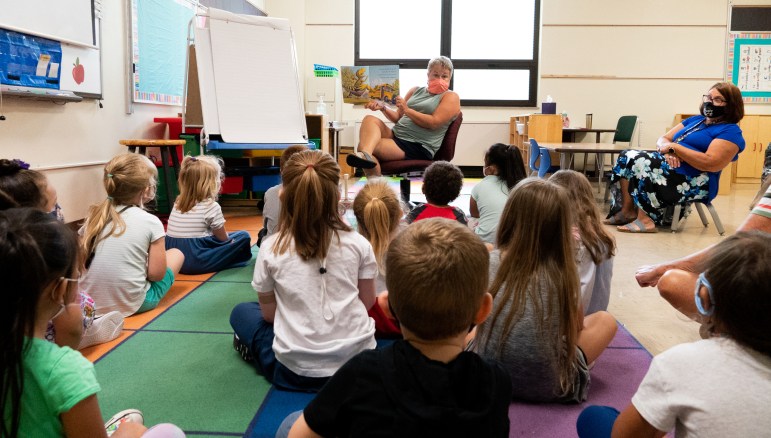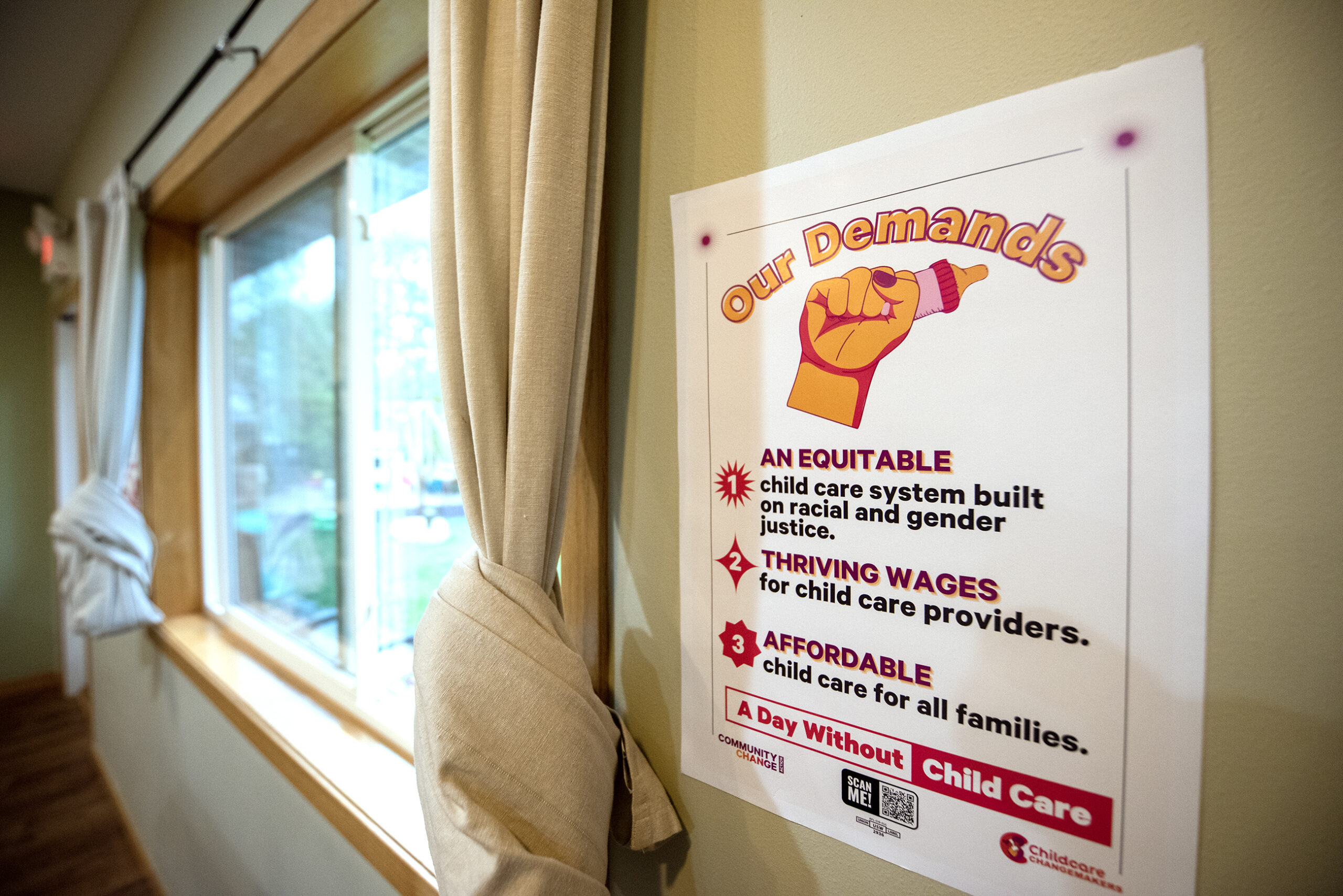The child care system in Wisconsin fell short of families’ needs, even before the coronavirus pandemic started straining the system. Many families in rural areas lived in child care deserts, where there were no local providers. In denser metropolitan areas, families’ needs outstripped available spots.
Then, when COVID-19 shuttered schools and businesses around the state, close to 40 percent of child care providers closed their doors, according to data from the Department of Children and Families.
DCF secretary Emilie Amundson said many have reopened since then, but about 20 percent remain closed.
Stay informed on the latest news
Sign up for WPR’s email newsletter.
“The caveat that I’ll put on the numbers is that slots vary widely from provider to provider — you may have a family provider with eight slots for kids, you might have a large group center provider with 200 slots,” Amundson said at a virtual forum hosted by the Wisconsin Policy Forum.
Even those that are open may be subject to local restrictions that cap businesses to half, three quarters or some other portion of their usual capacity. That’s tough on families seeking child care as they return to full-time work or need to focus while telecommuting, and also tough on providers who often need to operate near capacity to make ends meet.
“We’re not seeing families coming back into the care environment quickly enough to stabilize … the precarious, razor-thin margins that these centers are used to running on even pre-pandemic,” Amundson said.
DCF tried to bridge that gap with $51 million from the federal coronavirus relief package directed specifically at child care providers in the state. Some providers were also able to get Paycheck Protection Program loans that helped pay to keep staff members on the payroll.
Amundson said there’s been some regional variation in terms of child care access throughout the pandemic. People living in a child care desert before COVID-19 didn’t see much of a change, with local child care remaining out of reach. Outstate providers, she said, disproportionately stayed open throughout the pandemic, while providers in the state’s larger cities disproportionately stayed closed, especially bigger centers that could take more children.
Barring a massive influx of federal dollars, or a large allocation from the state budget to help keep providers afloat, Amundson said her agency is trying to work with the resources at hand. She said they’re especially working with DPI and encouraging communication between local school districts and early care and education providers to work out solutions for families, and making sure parents whose school districts have opted for virtual instruction are eligible for the state child care subsidy program, Wisconsin Shares.
She pointed to the Madison Metropolitan School District as a model for child care this schoolyear. MMSD and Madison School and Community Recreation have promised about 1,000 child care slots for elementary school students during school hours, while community providers are offering up another 830 spots located at elementary and middle schools. Children will be prioritized based on their families’ ability to pay for child care, their learning needs, and whether they’re children of MSCR workers, teachers or essential workers.
Even for schools that plan to return with students attending school in person, she said, it’s essential to start planning now for the possibility that they’ll have to switch back to virtual learning because of positive tests, because parents or other caregivers may not be able to pivot back to taking care of their kids at home.
With different school districts making different decisions about whether they’ll bring kids back into the building, and day care access becoming even more unreliable, employers are also worried about Wisconsin’s child care landscape.
Tim Sheehy, president of the Metropolitan Milwaukee Association of Commerce, said it’s a challenge for all working families with kids right now.
“I think this is front and center on every employer’s mind, whether their employees are working virtually or whether they’re working in the office or on the plant floor,” he said at the policy forum event. “I think about it in the context of talent — making sure that we have the employees that are working in a position to keep their jobs as we come out of COVID and through COVID.”
In the Milwaukee area, he said, he’s waiting to see how the local Boys and Girls Clubs, many of which operate out of Milwaukee Public Schools buildings, will handle opening up while the schools themselves remain closed.
“It’s going to be a real shame, come this fall, if the Boys and Girls Clubs end up serving 500 students, versus the 5,000 that they usually do serve,” he said.
Wisconsin Public Radio, © Copyright 2024, Board of Regents of the University of Wisconsin System and Wisconsin Educational Communications Board.





